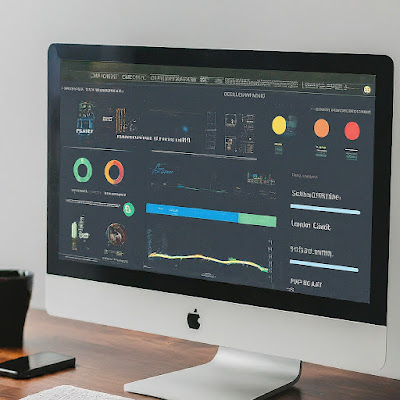It's All About Data: Driving Business Decisions with Power BI
In an era defined by rapid technological advancement, data has emerged as the cornerstone of successful business strategies. For IT Directors, the ability to make informed decisions based on comprehensive data analysis is crucial. Power BI, a leading business analytics tool, enables organizations to transform raw data into meaningful insights, allowing for smarter, data-driven decision-making. This article explores the pivotal role of Power BI in shaping effective business strategies.
The Role of Data in Business Decision-Making
Reducing Uncertainty: Informed decisions rely on accurate data. Power BI provides a reliable framework for analyzing vast amounts of information, minimizing the uncertainty that can arise from guesswork.
Speed and Efficiency: In today's fast-paced business environment, the ability to make quick decisions can set a company apart from its competitors. Power BI facilitates real-time analysis, empowering teams to act swiftly on emerging trends and opportunities.
Identifying Insights: The analytical capabilities of Power BI enable organizations to uncover hidden insights within their data. By recognizing patterns and trends, businesses can proactively adjust their strategies to align with market demands.
Encouraging Collaboration: Power BI’s sharing features promote collaboration across departments. With access to shared dashboards and reports, teams can work together to analyze data and develop cohesive strategies.
Key Features of Power BI for IT Directors
Visual Data Representation: Power BI’s interactive dashboards transform complex data into easy-to-understand visualizations, allowing decision-makers to grasp insights at a glance.
Natural Language Processing: Users can query data using simple language, making it accessible for stakeholders without technical expertise. This democratizes data access and empowers all team members to engage with analytics.
Comprehensive Data Connectivity: Power BI connects to various data sources, including databases, cloud services, and spreadsheets. This flexibility ensures a holistic view of operations and performance.
Powerful Data Modeling: With advanced data modeling capabilities, Power BI allows analysts to create intricate relationships between datasets, enabling deeper insights that can inform business decisions.
Best Practices for Implementing Power BI
Provide Training and Support: Ensuring that team members are well-versed in Power BI is essential for maximizing its effectiveness. Offer training sessions and resources to help users become proficient with the tool.
Define Business Goals: Before rolling out Power BI, it’s critical to establish clear business objectives. This focus will guide the development of dashboards and reports that align with organizational priorities.
Adopt an Agile Approach: Data analysis should be an ongoing process. Regularly review and update Power BI reports to adapt to changing business needs and market conditions.
Promote a Data-Driven Culture: Encourage a culture where data-driven decision-making is valued. By integrating Power BI into daily operations, organizations can foster a more informed workforce.
Explore Further
For IT Directors looking to deepen their expertise in Power BI, the book Mastering Microsoft Power BI is an invaluable resource. It provides in-depth knowledge on harnessing the full potential of Power BI for data analysis and business intelligence. Check it out here: Mastering Microsoft Power BI.
In addition to foundational knowledge, mastering the advanced features of Power BI can significantly enhance your analytical capabilities. For a comprehensive guide, consider exploring Mastering Microsoft Power BI, which covers best practices and innovative techniques to elevate your data analysis efforts.
Conclusion
In today's data-driven landscape, leveraging tools like Power BI is essential for IT Directors seeking to enhance their organization’s decision-making capabilities. By embracing data analytics, fostering collaboration, and implementing best practices, businesses can make informed decisions that drive growth and success. For further insights into maximizing Power BI’s potential, don’t miss the opportunity to read Mastering Microsoft Power BI.
Remote IT Director with expertise in Help Desk
Management, SQL, and User Support, dedicated to driving efficiency and
excellence in IT operations. Skilled in optimizing IT service delivery,
managing support teams, and ensuring seamless user experiences across remote
environments.
https://www.linkedin.com/in/wiredwizard


Comments